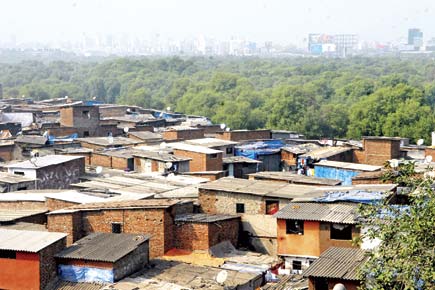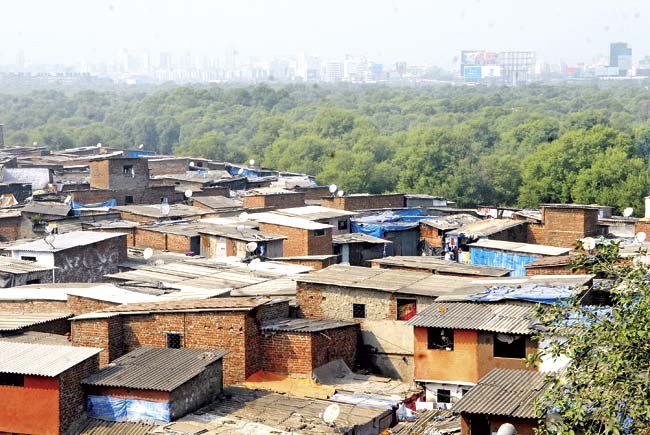For the past four months, I have been settling down to life in the foothills of the Himalayas, in a village a few kilometres above Dehradun, after all the hurly-burly of Mumbai

 For the past four months, I have been settling down to life in the foothills of the Himalayas, in a village a few kilometres above Dehradun, after all the hurly-burly of Mumbai. But while there is birdsong, fresh air and great views, the most compelling impression has been that of real estate development. The sound I hear most often is of earth movers and concrete mixers straining up the hills, negotiating steep inclines and narrow dirt roads.
For the past four months, I have been settling down to life in the foothills of the Himalayas, in a village a few kilometres above Dehradun, after all the hurly-burly of Mumbai. But while there is birdsong, fresh air and great views, the most compelling impression has been that of real estate development. The sound I hear most often is of earth movers and concrete mixers straining up the hills, negotiating steep inclines and narrow dirt roads.
Three out of four hoardings advertise some new property. The names range from Raj, nostalgia, geographical impossibilities and the craving for the ideal and the improbable Imperial Towers, Arcadia Hillocks, Pacific Hills and Green View Blossoms, Whispering Willows and Park Belles, (pronounced ‘Bell-es’, to make it easier for some customers but don’t tell them I told you).
ADVERTISEMENT

The enduring shame of Mumbai’s slums and shanty towns remain for all that the authorities have spent the last 20 trying to extern them for the criminal act of being poor.” Representation pic
Buildings cannot be taller than seven storeys in and around Dehradun but there is hope amongst developers that soon a magical height of 10 will be the norm. Meanwhile as there is enough land, there are no problems yet with parking and gardens in these apartment blocks. If there is a problem, it is with the same unbridled growth and apparent ignorance of zones. Silence has been provided by nature but is easily destroyed by a marriage “garden” that comes up opposite a school and next to a facility for assisted living for the elderly.
The few malls that Doon has are packed on weekends and contain several high and middle-end brands. But the pavements outside, well to be honest, there are no pavements. Just rubble organised better or worse. The fancy wrought iron street lights put up on the higher reaches of Doon’s iconic Rajpur Road have already suffered in the past six months from bad maintenance and terrible driving.
Together with impressive growth and comparatively high prices - a 3,000 sq ft flat can cost upward of Rs 2 crore and a room at a five star spa is in the range of Rs 35,000 night - urban distress and squalor are everywhere. And images of the degradation of India’s finest city come flooding back to you.
The pavements that Mumbai lost, together with the open spaces, the shared areas, the cleanliness (yes, indeed I can remember that)... perhaps there is a shared spirit left but it is depleted. The enduring shame of Mumbai’s slums and shanty towns remain for all that the authorities have spent the last 20 trying to extern them for the criminal act of being poor. As Daniel Brook says in his History of Future Cities, albeit about Shanghai, “Modernity is about more than fast trains and tall buildings.” Moral policing has been as dangerous to Mumbai’s future as all the freebies handed out to developers.
The British poet John Betjeman in his charming little pieces for The Telegraph, London, wrote in 1962 about London’s housing problems, “Ugly spreading places could be rebuilt more compactly, with traffic segregated from pedestrian areas. There is less harm in building upwards, if there are pleasure and peace in what is on the ground.”
A somewhat utopian concept for today’s Mumbai but surely a kernel of an idea that it could conserve and also allow progress. The only thing saving Mumbai right now from becoming a total nightmare is the effort of its citizens to save and maintain. For every few foolish ideas there has been at least one that has worked and it is the only way to save ourselves from the politicians we have made into our masters. (Although Maharashtra’s voters have given our politicians a little shared misery in this recent election.)
Dehradun however is an old-new town, itching to become a city. It has the chance to learn from all the mistakes made before. I see citizens’ efforts working to preserve and encourage the charm of old areas of Rajpur Road. But I also see the same big city desire to turn your back on surrounding urban squalor by opting for a fantastically named but inevitably insular ‘gated community’; the impossible search for ‘like-minded’ people which does not just keep those you don’t like out but also fosters seething anger in those left behind and denies you the vibrancy of city life.
The trucks haven’t stopped wheezing uphill past my window either.
Ranjona Banerji is a senior journalist. You can follow her on twitter @ranjona
 Subscribe today by clicking the link and stay updated with the latest news!" Click here!
Subscribe today by clicking the link and stay updated with the latest news!" Click here!







